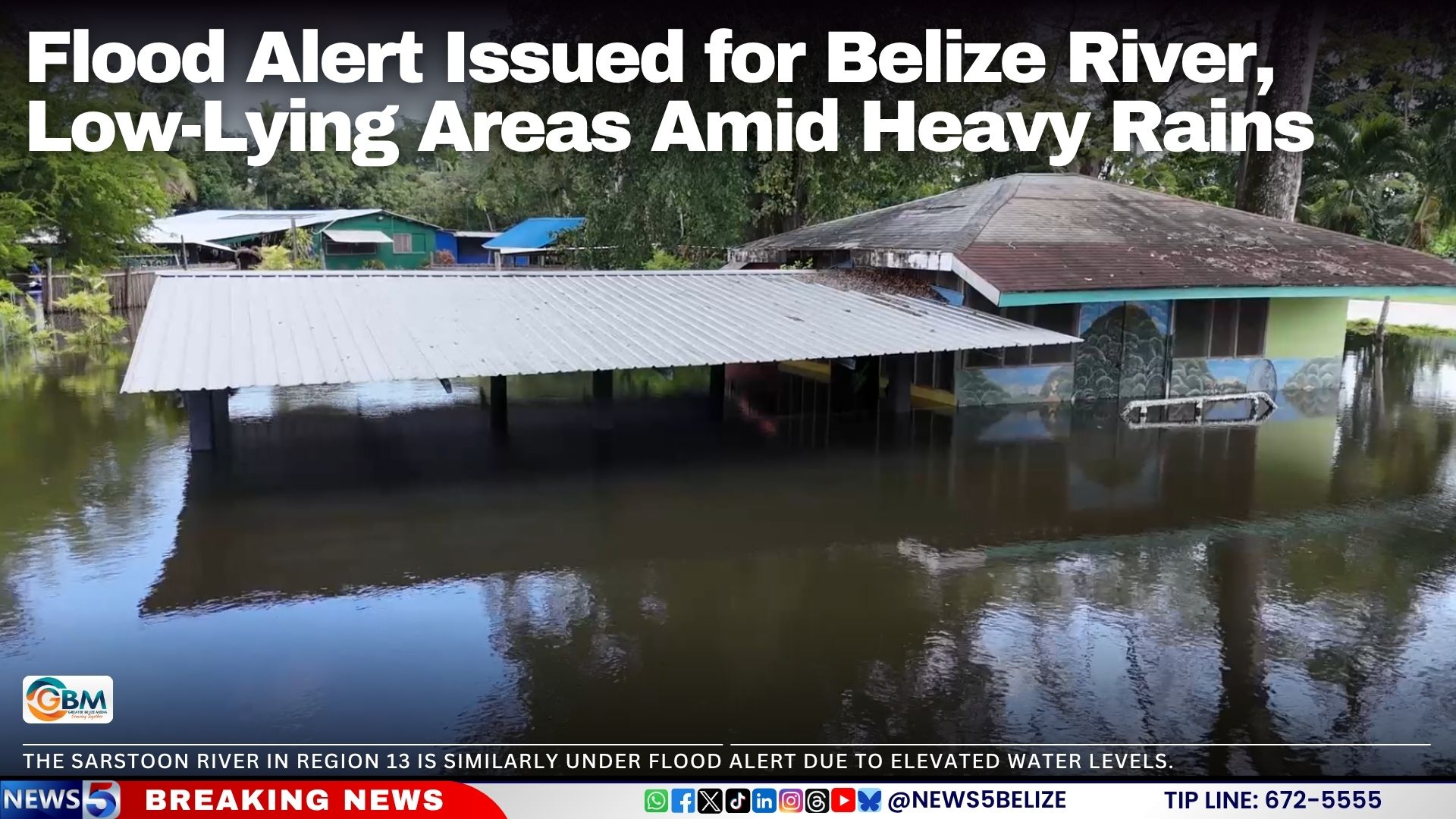The National Hydrological Service has issued a flood warning for the Belize River at More Tomorrow, along with a general flood alert for low-lying areas across the country, as rainfall associated with a tropical wave continues to impact river levels nationwide.
According to the afternoon flood forecast, increased water levels are expected in the northern, central, and inland regions of Belize, with several rivers and streams already experiencing above-normal levels.
In Region 7, rivers such as the Rio Hondo and New River are projected to rise significantly at key points including Blue Creek North, Santa Cruz, San Antonio, and Caledonia.
In Region 9, above-normal levels are expected on the Mopan River at Benque Viejo Town and the Macal River at San Ignacio, although Fortis hydro facilities are not expected to spill. The Belize River, in particular, poses a concern, with flood-stage levels forecasted at More Tomorrow and elevated levels at Double Run.
Further south, Region 11 is also experiencing rising waters. The Sibun River at Freetown Sibun, the Southern Lagoon at Gales Point, the Sittee River at Kendal Bridge, and rivers on the eastern slopes of the Maya Mountains are all showing above-normal levels. In addition, branches of the Monkey River at Swasey and Bladen, the Deep River at Medina Bank, and southern rivers such as the Rio Grande, Moho, and Temash are also expected to remain high.
The Sarstoon River in Region 13 is similarly under flood alert due to elevated water levels.
This latest flood alert follows earlier warnings issued by the National Meteorological Service of Belize, which placed the country under a Small Craft Caution due to gusty winds and an Excessive Rainfall Watch. Although no tropical cyclone formation is expected in the North Atlantic Basin over the next 48 hours, the ongoing tropical wave continues to deliver heavy rain that is contributing to the flooding risk.
Authorities are urging residents in flood-prone communities, both urban and rural, to remain vigilant, monitor official updates, and take precautionary measures to protect lives and property.
